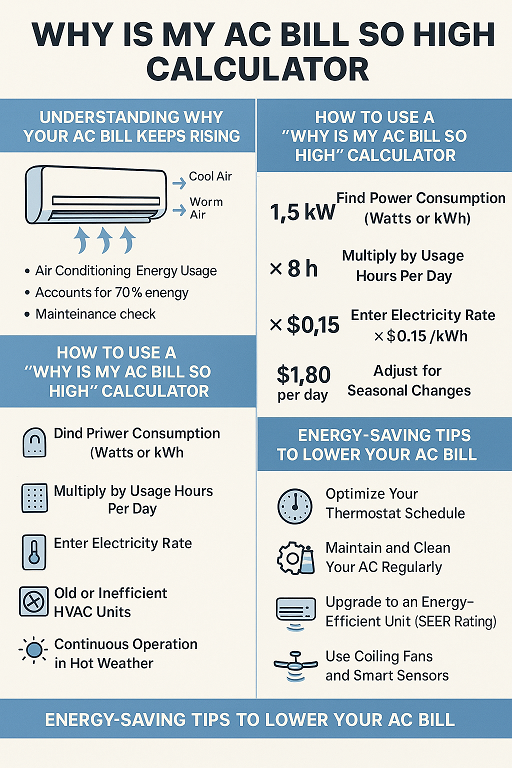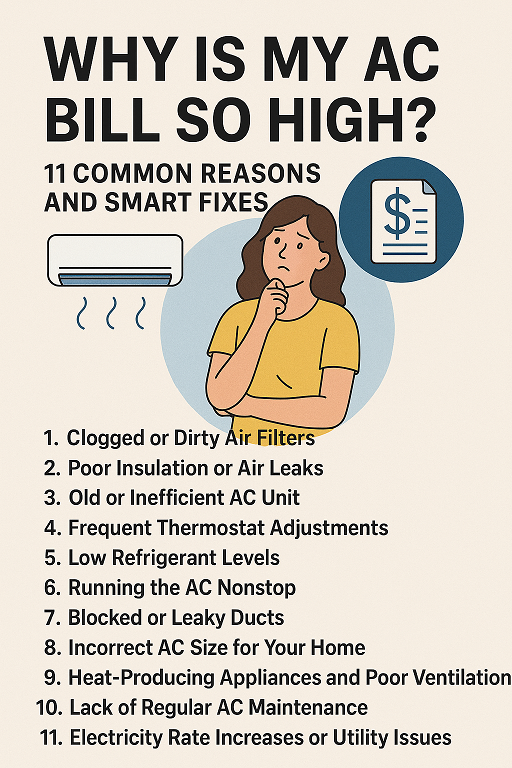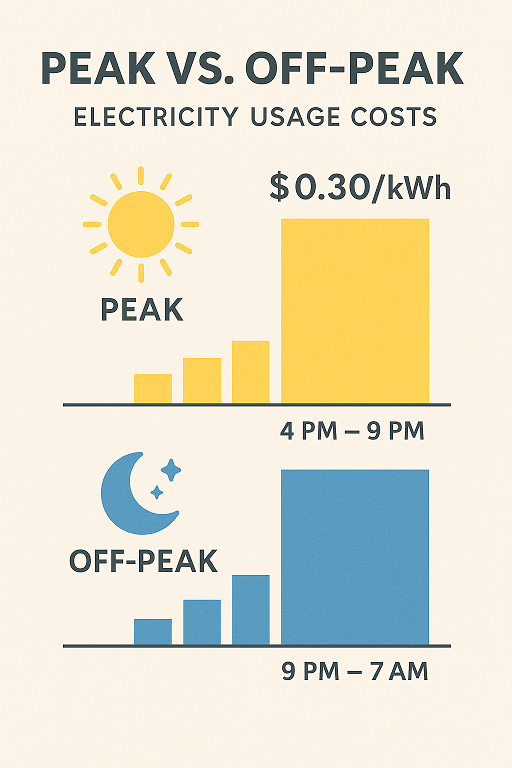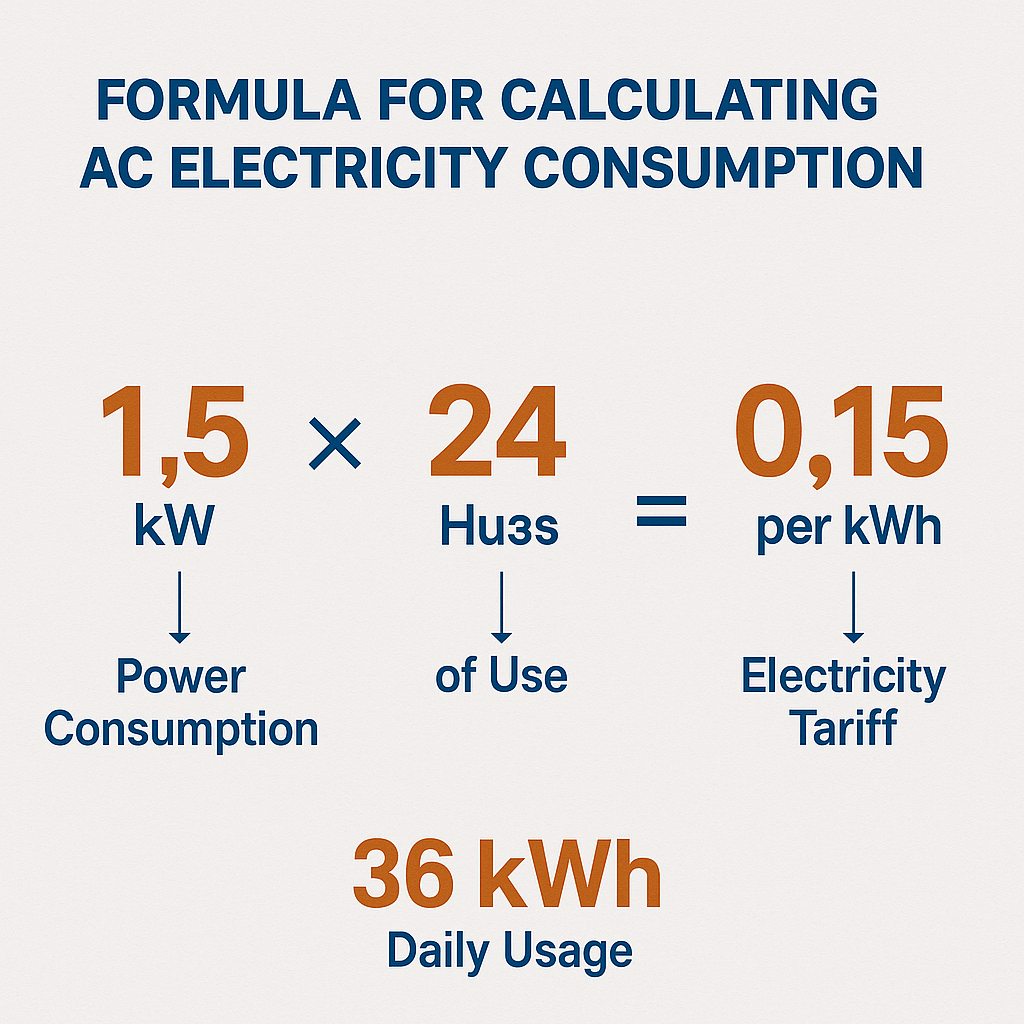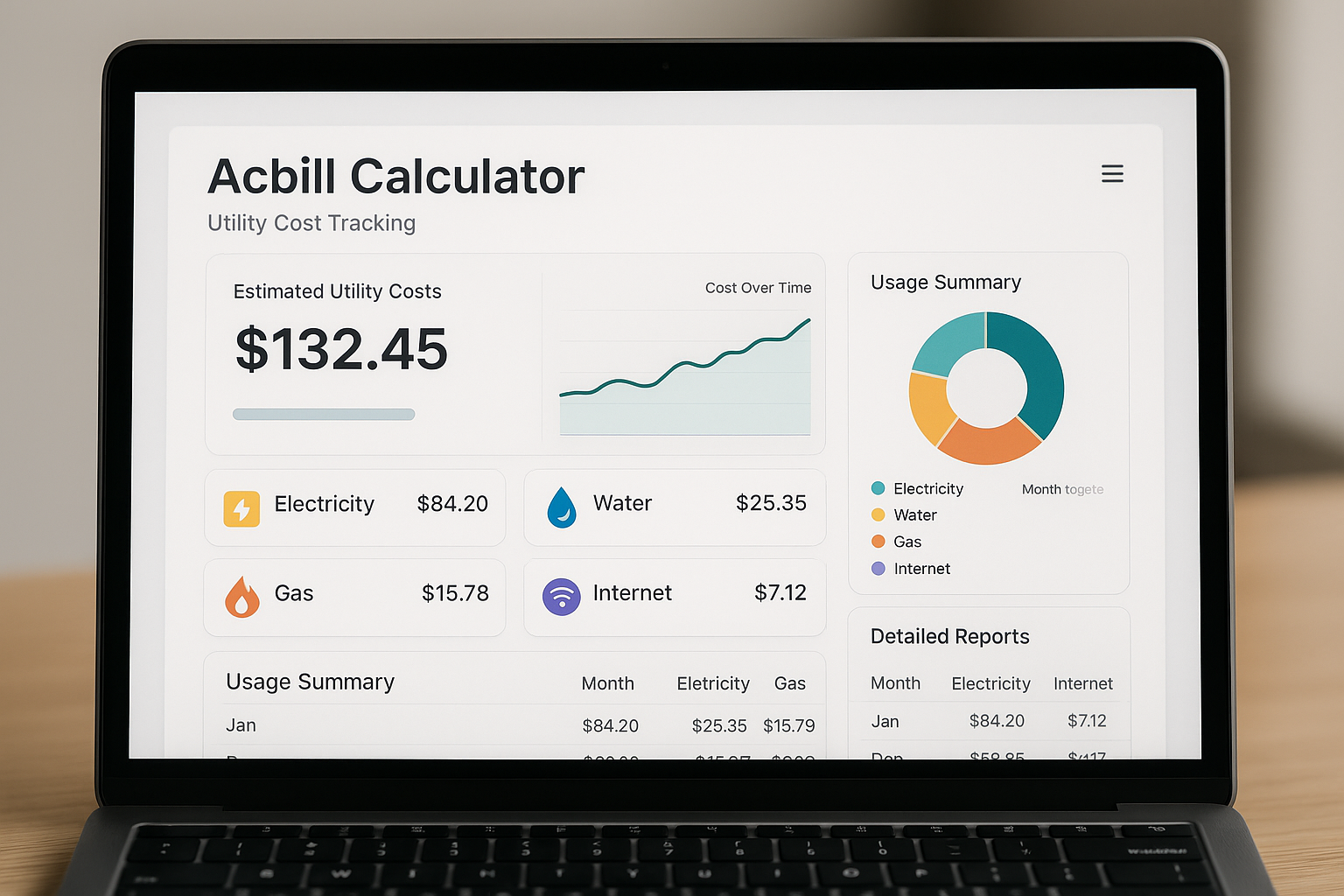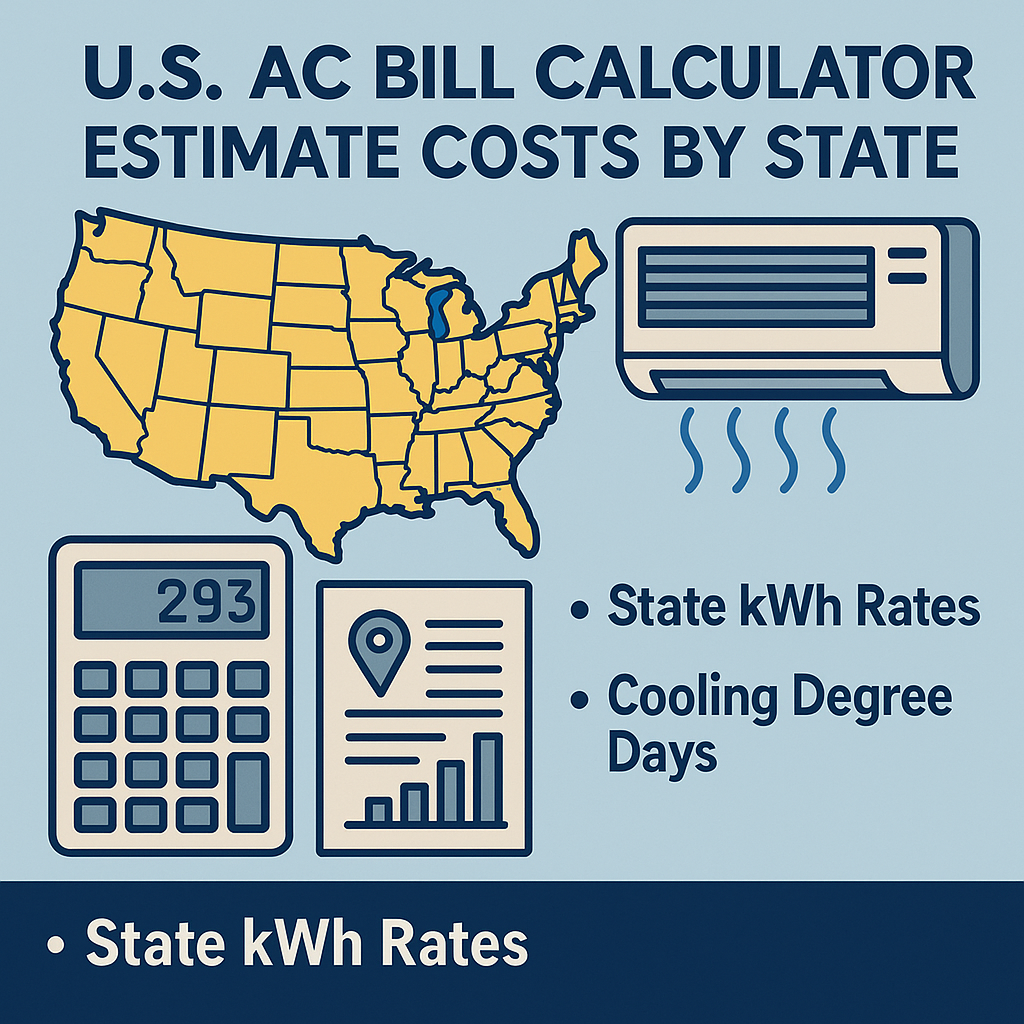
U.S. AC Bill Calculator: Estimate Costs by State
U.S. AC Bill Calculator: Estimate Costs by State
Introduction to AC Energy Costs in the U.S.
AC is a summer staple in most parts of the United States, but you can pay a variety of prices depending on your location. With electricity costs rising and no one wants to be too hot, it's more important than ever to know where you stand in terms of home AC costs.
Using AC Bill Calculator USA you can get an instant, accurate estimate of your statewide AC usage costs. Whether you want to manage your money more wisely, make a move, or simply want to know how much you spend by location, this tool can help you find that information.
How the AC Bill Calculator USA Works
The calculator uses a combination of:
- Your region is established by entering ZIP codes
- Instate electricity rates (kWh)
- CDD as a projection of demand
- The size or square feet of a home Home size or square footage
- Efficiency of the AC system (the SEER rating)
It gives you annual and monthly cost estimates based on your climate and energy profile. It also takes into account if the area you live in uses peak demand charges.
State-by-State Electricity Rates and Their Impact
The cost of electricity differs with rates ranging below 10 cents per kWh in the state of Idaho to highs of more than 30 cents per kWh like in Hawaii state and California. A brief summary here:
State | Average kWh Rate (¢) | Impact on AC Bills
Louisiana | 9.5 | Low
Florida | 11.9 | Moderate
California | 30.2 | High
Texas | 13.1 | Moderate-High
The increased rates imply that even effectively working AC units can bring up rather huge bills in summer months.
The Role of Cooling Degree Days (CDD) in AC Usage
Cooling Degree Days (CDD) denote the measure of the temperatures of the weather against a base temperature traditionally 65F. The greater the CDD in your state the more you operate your AC.
- Arizona and Texas have CDDs that are among the highest i.e. high usage.
- Southern and coastal states such as Oregon or Washington have extremely low CDDs.
This metric is key in estimating your true AC energy consumption.
Peak Demand Charges and Time-of-Use Pricing
There are utility companies that use peaks demand charges especially in the afternoon and the early evening. This is how it will impact you:
- Time-of-Use (TOU) Pricing: Power will be more expensive at peak time (e.g. 4 PM-9 PM).
- Demand-Based Charges: Surcharges when you are using a lot at a high time.
Smart AC use outside peak times can help you save up to 20–40% on your bills in some places.
Estimating Monthly and Annual AC Costs
For example, suppose you are in Dallas, TX, and your average kwh rate is 13.1c and the home size of 1,500 sq. ft. has a SEER 14 rated AC:
- Average Cost in Monthly AC: ~120
- Estimated Cost Per Year: ~$720 (6-months of cooling)
These estimates vary based on:
- Home insulation
- Window types
- Thermostat settings
- Cleanliness of air filter
AC Efficiency: SEER Ratings and Energy Savings
SEER is the measure of efficiency of your air conditioner. The greater the SEER, the less electricity to use your system.
SEER Rating | Energy Efficiency | Impact on Bill
SEER 13 | Low | High cost
SEER 16 | Moderate | Balanced
SEER 21+ | High | Low cost
If you live in a hot state, upgrading to a higher SEER unit can save you hundreds annually.
Comparing AC Costs by Home Size and Type
It is obvious that a 3-bedroom house consumes more energy when it comes to cooling than a studio apartment. However, the use of insulation, height of the ceiling and exposure to the sun can also contribute to the use of energy.
Home Type | Avg. Monthly AC Bill
Studio Apartment (500 sq. ft.) | $35–$60
Townhome (1,200 sq. ft.) | $75–$110
Detached Home (2,000+ sq. ft.) | $130–$250
Regional AC Usage Trends in the USA
- South & Southwest: High AC usage, especially in Arizona, Nevada, and Texas.
- Midwest: Moderate to high usage during summer.
- Northeast: Seasonal AC use, mostly in July–August.
- Pacific Northwest: Minimal AC usage; fans often suffice.
This tool helps uncover how your region compares nationally.
How to Reduce Your AC Bill Without Sacrificing Comfort
There are several strategies to keep cool and cut costs:
- Install smart thermostats and plan energy-efficient cooling.
- Air filters should be changed on a monthly basis to ensure that the air flows easily.
- Keep the daytime curtains closed to keep sunlight away.
- Buy energy efficient windows.
Little changes can reduce AC bills by 10–30% without affecting comfort.
Best States for Affordable AC Usage
States that combine low electricity rates and low cooling needs:
State | Reason
Oregon | Low CDD + cheap hydroelectric power
Washington | Low usage + cool climate
Idaho | Low rates + short summers
Worst States for AC Costs: Where You Pay the Most
Some states are energy-cost nightmares for AC users:
- Hawaii: High electricity + warm year-round
- California: High rates + long cooling season
- Florida: High humidity + consistent heat
It is the locals here who have to be particularly careful with regard to AC efficiency and usage patterns.
How Climate Change Is Affecting AC Usage in the U.S.
With rising global temperatures, AC use is becoming:
- More frequent
- Longer-lasting
- More expensive
With rising heatwaves, particularly across northern U.S., AC will no longer be a luxury, it will rather become a necessity.
Use Cases: Who Benefits from the AC Bill Calculator USA?
- Property owners budgeting during summer time
- Tenants who examine energy expectations
- Landlords and realtors estimating energy requirements in property
- Advice from energy consultants
- Each one of us thinking of a change
FAQs About AC Bill Calculator USA
1. Is there any ones-off fee about using the calculator?
Right, it is 100 per cent free and online.
2. Is it suitable to apartments and homes?
Simply type-in your square footage and system information.
3. Does it contain state taxes and utility charges?
Most surcharges will be considered, but the utility fees might be determined precisely.
4. Is it able to estimate on window units?
It is true, enter the watts and hours consumed on a daily basis.
5. Does the tool undergo a regular update?
And yes rates and climate data changes monthly.
6. May I compare states in parallel?
Yes, I know, compare mode, side-by-side results.
Conclusion and Next Steps
You don't have to be in the dark when it comes to your AC bill. Use AC Bill Calculator USA to make informed decisions about the estimated cost to cool your home or office and compare usage across states and within specific states. Test the tool yourself and keep yourself cool without blowing your budget.
